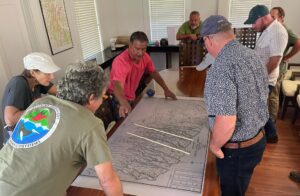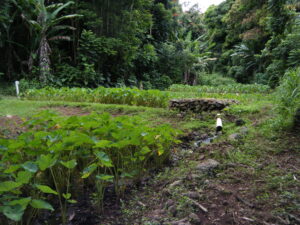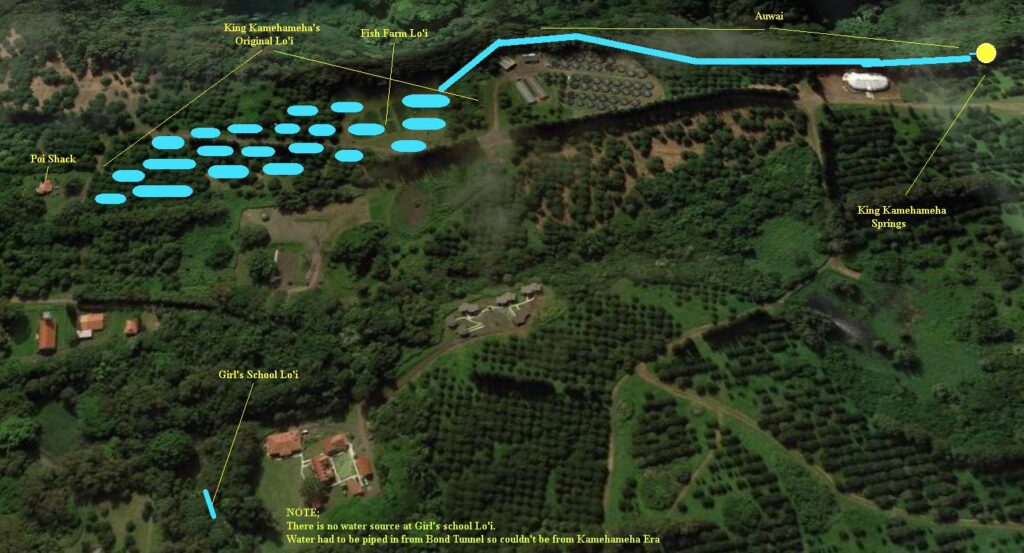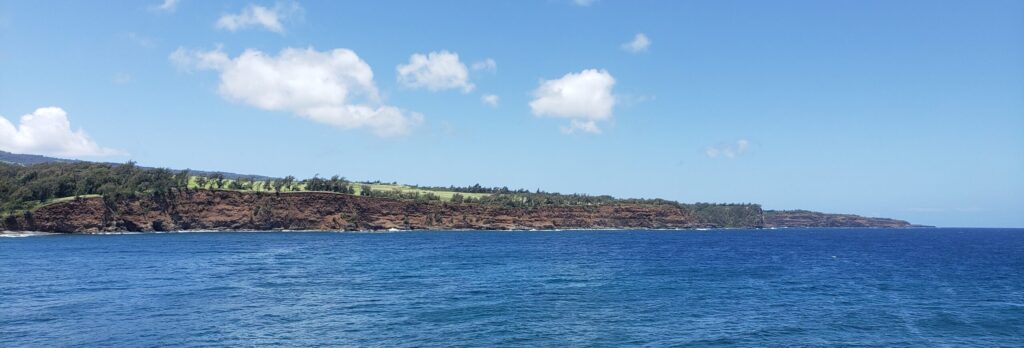A Living Scientific Laboratory
THE COVID-19 PANDEMIC. A DOCKWORKER STRIKE ON THE WEST COAST. SUPPLY CHAIN ISSUES. THE WAR IN UKRAINE. Because Hawai‘i imports about 90 percent of its food supply, these global events have caused shortages that have exposed the state’s vulnerability to situations often beyond its control.

To address this vital issue of sustenance, the University of Hawai‘i (UH) and other stakeholders are now taking a hard look into incorporating contemporary science with sustainable practices of the past to help provide solutions to food and energy security, for the state and beyond. As a result, UH has partnered with ‘Iole, a non-profit place-based research center and living scientific laboratory on Hawai‘i Island that is gathering academic experts, Native Hawaiian practitioners, community members, students and government representatives to develop sustainability solutions based on ancestral knowledge and indigenous practices.
Located on approximately 2,400 acres in the historic community of Kohala, the ‘Iole ahupua‘a (self-sustaining sections of land that run from mountain to the sea) was gifted to the Hawai‘i Community Foundation (HCF) 2021 by longtime stewards, the Kohala Institute and the New Moon Foundation, in an effort to increase capacity to the area’s restoration. To help carry out its mission, HCF partnered with UH and Arizona State University to leverage their expertise and resources in three focus areas: energy security, food security and place-based learning. All three entities have committed to jointly identifying opportunities for extramural funding to advance ‘Iole’s mission.

The guiding principle of ‘Iole is based on the Native Hawaiian sense of shared responsibility to care for, learn from, and thrive off of the ahupua‘a. In addition to its restoration and cultivation of the ahupua‘a, ‘Iole will look to develop solutions-based sustainability models that can be appropriately scaled and replicated in other parts of the world.
“We are all excited at this opportunity to collaboratively envision and create a 21st century ahupua‘a,” said UH President David Lassner. “‘Iole can be a place grounded in Hawaiian values and knowledge where we are jointly committed to the innovation and courage necessary to integrate traditional and modern ways of learning, doing and living.”
One of the first priorities of ‘Iole was to assess and inventory the critical natural resources found throughout the ‘Iole ahupua‘a. The findings helped to establish the foundation of ‘Iole’s strategy and engagement, He Le Aloha no ‘Iole, which was crafted by Sharon Ziegler-Chong, director of Research & Community Partnerships at University of Hawai‘i at Hilo (UH Hilo) and Kamuela Enos, director of the UH Office of Indigenous Knowledge and Innovation. The wide range of multi-disciplinary research projects are being spearheaded by UH Hilo with a commitment to the project’s goal:
Identify how twenty-first-century iterations of pre-contact indigenous governance of ahupua‘a systems can be restored in partnership with community, regional students, and external partners. Work will be woven together like a lei of aloha for the land, for the ancestors of the land, for the community, starting with ‘Iole, extending outward to Kohala, West Hawai‘i Island and beyond.
While Enos noted that there has been a long and storied history of ahupua’a restoration efforts around the state, he has not seen this kind of high level of support from foundations and institutions of higher education before for a specific valley. “The value proposition here is that we have a real opportunity with an intact valley to create a world-class facility to show the importance of traditional practices not just as culture, but as deep scientific regenerative biosystems management,” said Enos. “To restore the valley, to center our work in empowering Kohala youth in process of learning, and to support the development of future scientist practitioners both kanaka (Native Hawaiian) and kama‘āina (Hawai‘i resident)— offers a unique opportunity and responsibility for UH to hold in this consortium.”
Earlier, HCF announced that it has engaged additional local organizations, including Kamehameha Schools and Hawaiian Electric Industries, which are directly interested and impacted by ‘Iole’s focus areas.
“As the university on and of Hawai‘i Island, we are a grateful member of the ‘Iole ‘ohana (family),” said UH Hilo Chancellor Bonnie Irwin. “The work provides excellent research and learning experiences for our faculty and students, and just as important, this work provides them with an opportunity to give back to the island we call home.”

‘Iole Projects Led by UH Hilo
Visualization
LEAD: Associate Professor Ryan Perroy, Geography
GOAL: Create a baseline geodatabase for the ‘Iole ahupua‘a to serve as a resource for managers, researchers, students, and the community. This geodatabase can be used to better understand and quantify spatial change over time, to inform management and research projects, and as an educational and visualization tool for the ahupua‘a.
Baseline Sensors
LEAD: Professor Patrick Hart, Biology
GOAL: To understand the current distribution and abundance of birds and bats across the ahupua‘a.
Assessing Soil/Vegetation Health
LEAD: Instructor Nicholas Krueger and Professor Bruce Mathews, College of Agriculture, Forestry and Natural Resource Management
GOAL: A quantitative understanding of the area’s soil characteristics is needed in order to determine the best land management practices and uses possible to restore the ahupua‘a.
Reconstructing the Past
LEAD: Professor Peter Mills, Anthropology
GOAL: Understand the historical ecology of North Kohala
Kai (sea) and Wai (water)
LEAD: Marine Science
GOAL: Gather information that will provide a baseline analysis of wai and kai resources to inform future revitalization, restoration, and coastal management actions.
Planning the Place
LEAD: Professor Jonathan Price, Geography; and Professor Rebecca Ostertag, Biology
GOAL: Pull together information all projects through geographic information system and other tools and discussions to explore the boundaries and interactions, as well as the tradeoffs and scale, of different potential land uses
Building Engagement and Capacity
LEAD: All
GOAL: Engage students and community into collaborative research projects to gain experience in weaving ancestral and contemporary interdisciplinary knowledge and practices together to address regional resilience challenges.

